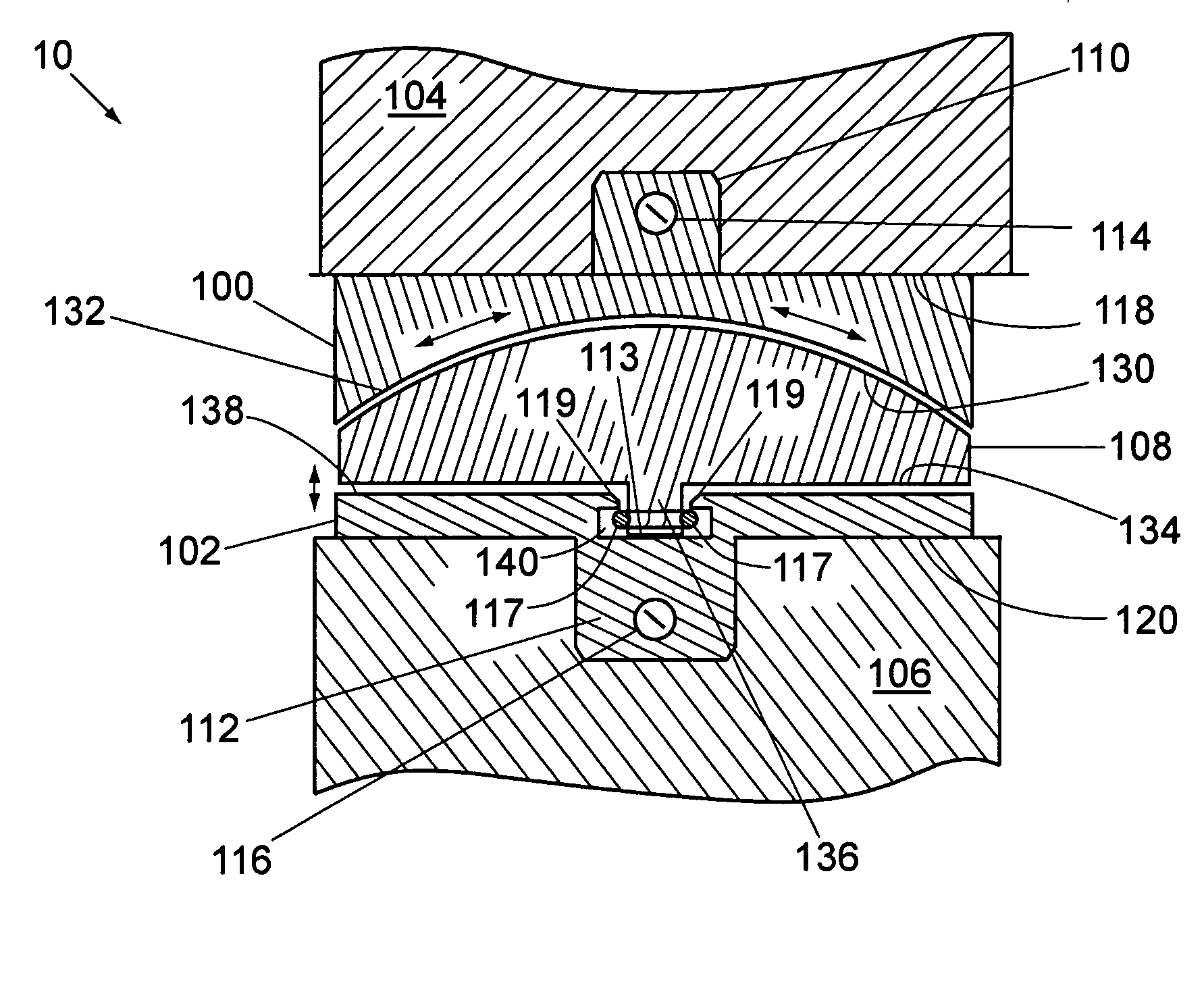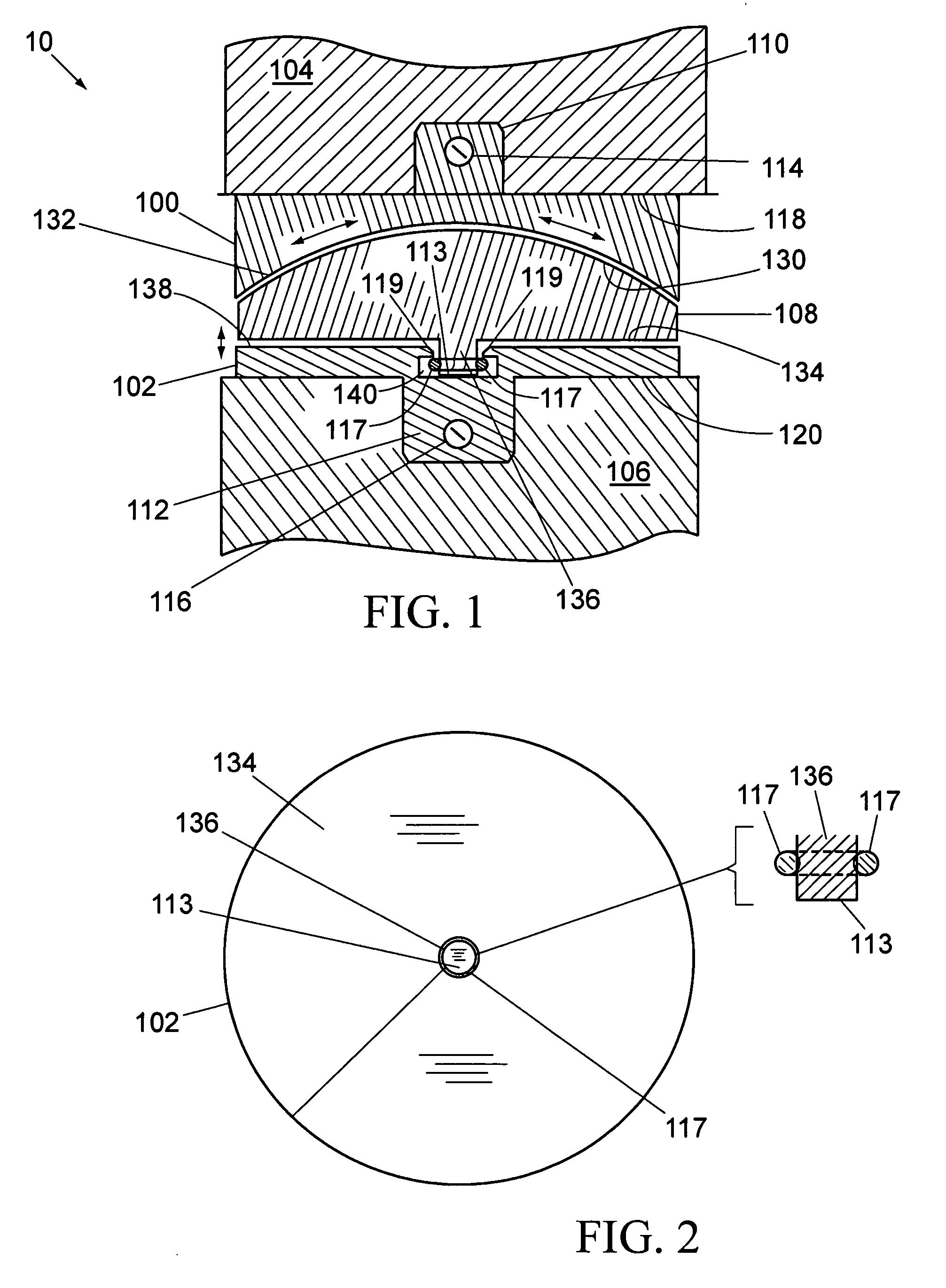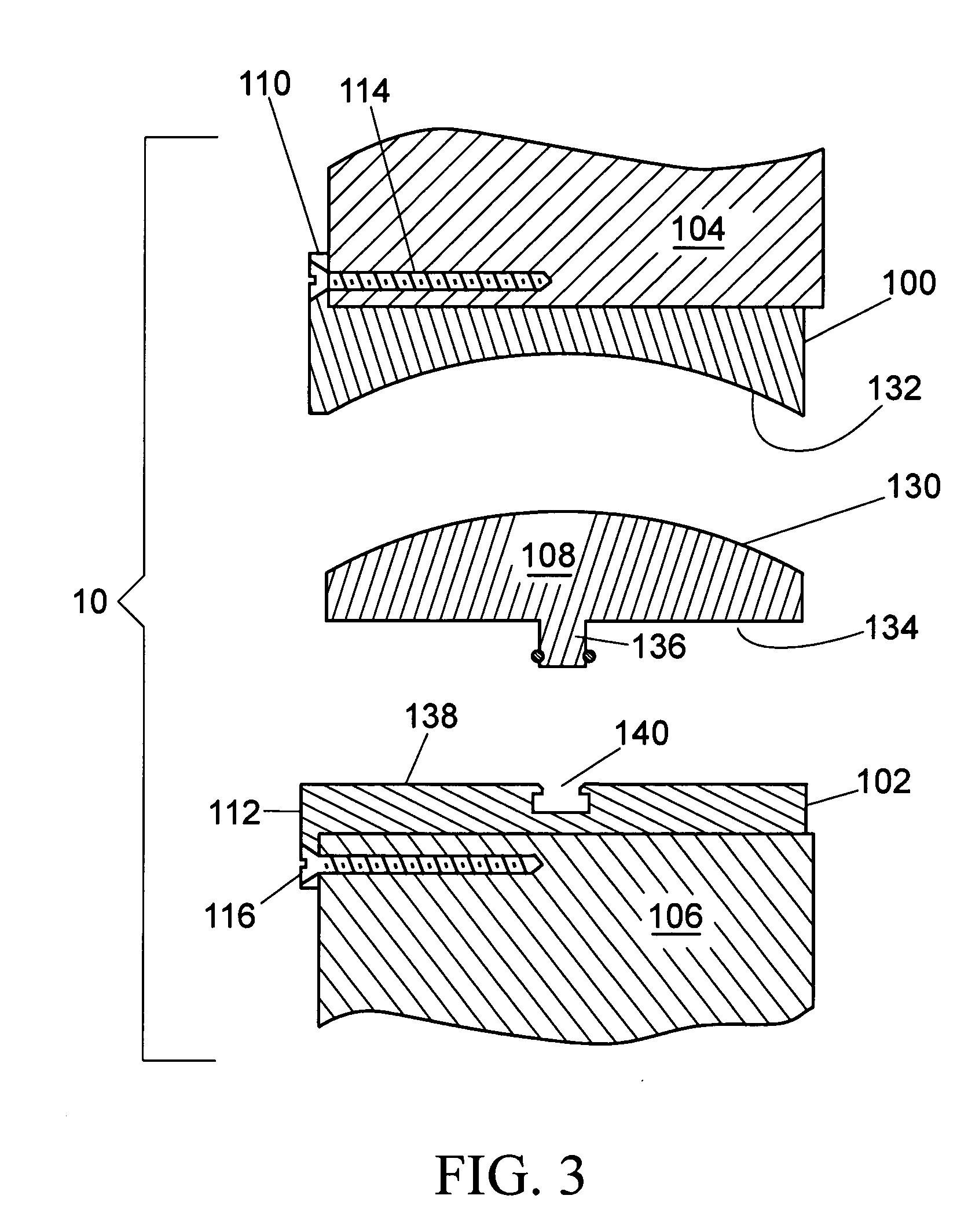Articulating spinal disc prosthetic
a spinal disc and prosthetic technology, applied in the field of prosthetics, can solve the problems of increasing the difficulty of cervical disc prosthetics, requiring an extremely high fatigue limit, and affecting the quality of spinal disc prosthetics, so as to improve reliability and durability, improve wear resistance, and improve durability. the effect of durability
- Summary
- Abstract
- Description
- Claims
- Application Information
AI Technical Summary
Benefits of technology
Problems solved by technology
Method used
Image
Examples
Embodiment Construction
[0034]FIGS. 1-3 are a side view, bottom plan view, and exploded view, respectively, of the spinal disc prosthesis 10 (lumber or cervical) according to a preferred embodiment of the present invention. Referring to all of FIGS. 1-3, the spinal disc prosthesis 10 as illustrated includes an upper, or superior, plate member 100, and a lower, or inferior, plate member 102, which are adapted to be secured to upper and lower vertebra 104, 106, respectively, in a spinal column. An intermediate member 108 is provided, and is disposed between the upper and lower plate members 100, 102, once the prosthesis is assembled in the spinal column.
[0035] It is to be noted that the reference to the plate members as upper and lower members is for the purpose of identifying these members in the drawings. It may well be possible that the positions of the two plate members can be reversed.
[0036] Each of upper and lower plate members 100, 102 is provided with means for securement to the upper and lower ver...
PUM
 Login to View More
Login to View More Abstract
Description
Claims
Application Information
 Login to View More
Login to View More - R&D
- Intellectual Property
- Life Sciences
- Materials
- Tech Scout
- Unparalleled Data Quality
- Higher Quality Content
- 60% Fewer Hallucinations
Browse by: Latest US Patents, China's latest patents, Technical Efficacy Thesaurus, Application Domain, Technology Topic, Popular Technical Reports.
© 2025 PatSnap. All rights reserved.Legal|Privacy policy|Modern Slavery Act Transparency Statement|Sitemap|About US| Contact US: help@patsnap.com



